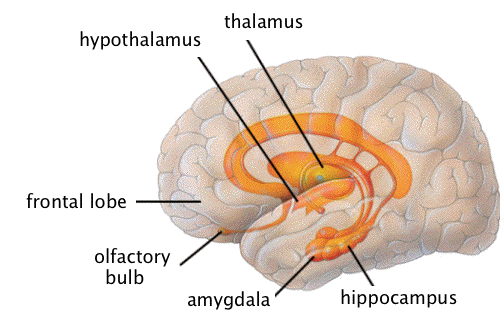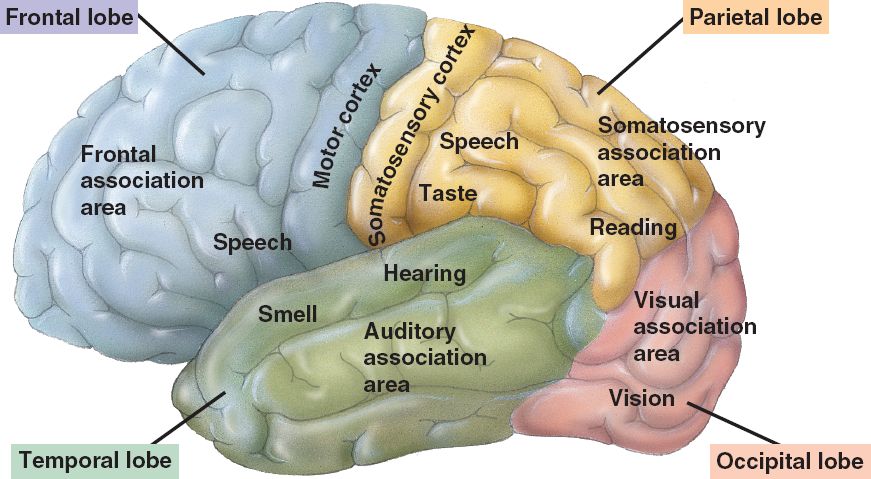The cortex's massive neural network processes, stores and, if necessary, recalls the information. This is where sensory information becomes emotions, where responses are organized and impulses are sent out through motor neurons.
The Limbic System
The limbic system is a complex set of brain structures that lie on both sides of the thalamus, right under the cerebrum. It is not a separate system, but a collection of structures including olfactory bulbs, hippocampus, amygdala and hypothalamus.
 |
| http://webspace.ship.edu/cgboer/limbicsystem.html |
Memory
Memory and memory storage is an area of constant research. To read a good, clear overview of memory creation, storage and retrieval click here.
Features of human memory:
1. Memorization is easier if the information as meaning to the individual.
2. Well-organized information is easier to retrieve.
3. Storage and retrieval of information is easier if them memory can be associated with other key stimuli.
4. Storage is improved if there is emotional weight to the memory.
5. Interference between memories makes storage and retrieval more difficult (eg. learning large amounts of new material can make it more difficult to retrieve old information)
Speech
Speech assists humans in their social interactions. At birth humans are capable of creating nearly 200 different sounds (this is a biological ability). In any given social environment (nation, culture), only 25-45 of these sounds are used. Humans also use writing and gestures (metacommunication) to communicate. In greater than 85% of people the speech association areas are found in the left lobe of the cerebrum. The auditory association area, found in the temporal lobe, also takes part in the creation and understanding of speech. Most of the time, it is also in the left brain that these sounds are converted into thoughts.
Features of human memory:
1. Memorization is easier if the information as meaning to the individual.
2. Well-organized information is easier to retrieve.
3. Storage and retrieval of information is easier if them memory can be associated with other key stimuli.
4. Storage is improved if there is emotional weight to the memory.
5. Interference between memories makes storage and retrieval more difficult (eg. learning large amounts of new material can make it more difficult to retrieve old information)
Speech
Speech assists humans in their social interactions. At birth humans are capable of creating nearly 200 different sounds (this is a biological ability). In any given social environment (nation, culture), only 25-45 of these sounds are used. Humans also use writing and gestures (metacommunication) to communicate. In greater than 85% of people the speech association areas are found in the left lobe of the cerebrum. The auditory association area, found in the temporal lobe, also takes part in the creation and understanding of speech. Most of the time, it is also in the left brain that these sounds are converted into thoughts.
The Cerebral Cortex
The cerebral cortex, often referred to as grey matter, is considered to be responsible for "higher" brain function. The surface of the cortex is folded in large mammals, increasing its surface area.
The two halves of the cerebrum are asymmetreical, both in structure and in function. The two sides complement each other: while one side takes part in speech and deduction, the other deals with physical and temporal connections (representations). In women, this asymmetry is less apparent.
 |
| http://gerardkeegan.com/glossary/cerebral-cortex |
 |
| http://www.as.wvu.edu/~rbrundage/chapter5b/sld014.htm |
 |
| http://bio1152.nicerweb.com/Locked/media/ch48/cerebral.html |
 |
| Asymmetry of the cerebrum |
Read Human nervous system here
ReplyDelete